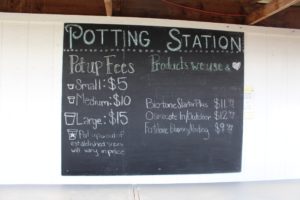
Headwinds or tailwinds as 2024 approaches
It never ceases to amaze me that any three people in our industry can view the same data and situation and interpret this information differently, each of the three arriving at different conclusions and plans to act. One’s outlook on life and business can be shaped by various factors, such as personal and business experiences, beliefs and cultural backgrounds.
As our focus turns to planning for spring 2024, let’s explore three distinctive perspectives: the optimist, the pessimist and the realist. Each perspective has its unique characteristics and can impact how individuals approach various aspects of their lives, including problem-solving, decision-making and interpersonal relationships. And each approach helps shape one’s attitude.
The Optimist:
- Tends to focus on the positive aspects of situations.
- Believes that good things will happen and that difficulties can be overcome.
- Sees opportunities in challenges and remains hopeful for the future.
- May have higher levels of happiness and life satisfaction.
- May be more resilient in the face of adversity.
Key points:
- Optimists often exhibit a positive attitude and high levels of motivation.
- They are more likely to persist in achieving their goals.
- Excessive optimism may lead to unrealistic expectations and disappointment.
The Pessimist:
- Generally focuses on the negative aspects of situations.
- Expects the worst and often worries about potential problems.
- May be more cautious and risk-averse in decision-making.
- Tends to experience lower levels of happiness and life satisfaction.
- May struggle with feelings of anxiety or depression.
Key points:
- Pessimists can sometimes be more prepared for setbacks due to their cautious nature.
- Their critical thinking can lead to more realistic assessments of situations.
- Excessive pessimism can hinder personal growth and limit potential.
The Realist:
- Strives for a balanced view of situations, considering both positive and negative aspects.
- Bases perceptions on facts and objective information, rather than emotions or biases.
- Adapts to circumstances and changes in the environment.
- Tends to make pragmatic decisions based on available information.
- May be skilled in problem-solving and critical thinking.
Key points:
- Realists often have a practical approach to life and can adapt to new situations.
- They value evidence-based decision-making and are less likely to be swayed by emotions.
Each of the three perspectives — optimist, pessimist and realist — offers unique advantages and challenges. The optimist fosters hope, resilience and motivation, while the pessimist can contribute critical thinking and preparedness for potential setbacks. Meanwhile, the realist brings a balanced, pragmatic approach to situations.
By understanding and incorporating elements from all three perspectives, we can improve our decision-making and problem-solving abilities. For example, starting with an optimistic perspective can help us to generate ideas and possibilities, while considering potential challenges and risks from a pessimistic perspective can help us to identify and prepare for potential obstacles. Finally, applying a realistic perspective can help us to make informed decisions based on objective information, while maintaining a balanced and pragmatic approach.
Overall, appreciating the diversity of human thought and understanding different perspectives can help us to build empathy, improve communication with others and make better and more informed decisions in our personal and professional lives.
How Spring 2023 Might Influence Spring 2024
Based on the anecdotal information I’ve seen, here’s how I believe spring 2023 will influence the coming year.
- Traffic counts will be down by as much as 15% (we didn’t keep some of those new customers we gained during the pandemic).
- In 2023, the retail economy was (and will continue to be) flat, especially when one factors in the inflation-driven rise in retail price points. The consumer cut back on discretionary spending, instead focusing on the basics and their essential needs while still spending on travel, entertainment and experiential enjoyments — all things that gave them pleasure and satisfied pent-up demands.
- Keep in mind that unit velocity was down in 2023, and sales dollars were flat to +5%, based on higher inflation-driven retails.
Bringing Back Customers in Spring 2024
During the pandemic, the older Gen Zs and the millennials (the majority of the new customers we picked up) found us; we didn’t find them. How do we bring back those we lost and simultaneously protect our loyal customer base? We can’t rely on just raising prices to grow our businesses — we need to grow our customer bases and transactions to prosper long term. What’s your marketing/value proposition that will appeal to your current and future customers to entice them to remain loyal and bring them back into our fold? Now more than ever, we need to communicate the real benefits and personal value of flowers, trees and shrubs.
Many well-known companies have been right-sizing and cutting expenses to become more efficient as the consumer purchase behaviors and drivers change, leading to store closings and bankruptcies. Iconic retailers like Bed, Bath and Beyond, Tuesday Morning, Gap, Best Buy, Walgreens, CVS, Party City, Foot Locker, Starbucks, and other chains have already announced more than 2,400 store closings in 2023, and this number doesn’t include family-owned/independent retailers like our garden centers.
These companies either didn’t read the tea leaves correctly, were slow to react to needed change or mismanaged their financials. Add to this the reality that lenders are becoming even more cautious about providing working capital to small and seasonal businesses like ours.
Now is the time to build closer relationships with your lenders, educating them about your business and your challenges — and how you plan to address them. Remember that cash flow is king to banks when they consider lending, especially to small businesses.
The federal government deferred college debt payments for three years, and folks with college debt either spent the deferred payments on purchasing homes, travel or cars, or they put it into savings, many of them anticipating permanent debt relief under President Biden’s proposed debt cancellation plan. With that cancellation program found unconstitutional by the Supreme Court, payments will reportedly begin again in October. It’s estimated that these renewed debt payments will equate to a 5% wage reduction for those borrowers. And remember that this will be an ongoing hit on discretionary spending with almost 44 million borrowers owing $1.6 trillion in college debt.
Scientists say that the extreme weather conditions we’ve experienced in 2023 aren’t one-offs; these trends will likely become more frequent and severe. While we can’t control the weather, we can learn to better adapt to it, protecting our inventories and educating consumers on what they can do to protect their investments in our products.
2024 is not only chock full of challenges but also filled with opportunities. I believe in local retailers; they know their market and customer base intimately, are quick to adapt to change, can anticipate trends and sense opportunities faster than their competitors. Also, they can build productive relationships with their lenders, customers and suppliers. Understanding your strengths is one of the keys to your success in 2024!
There’s no magic formula for planning or decision-making; each one of you has your own unique style and knows best what works for you.
But I leave you with one of my all-time favorite quotes by William Arthur Ward that has guided me through my business career: “The pessimist complains about the wind; the optimist expects it to change; the realist adjusts the sails.”
Are you sailing into headwinds or being pushed forward by tailwinds? It’s your choice.
For an enhanced reading experience, view this article in our digital edition.


















 Videos
Videos





